ВУЗ: Казахская Национальная Академия Искусств им. Т. Жургенова
Категория: Книга
Дисциплина: Не указана
Добавлен: 03.02.2019
Просмотров: 21638
Скачиваний: 19
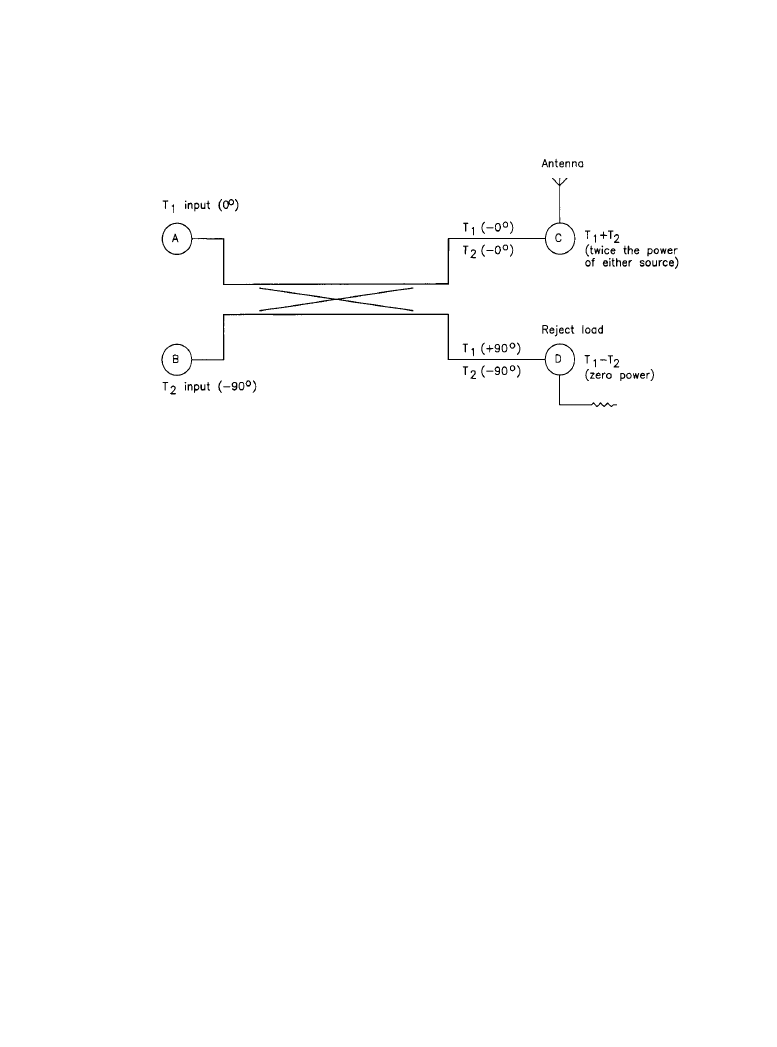
11-132 Broadcast Transmission Systems
amplitude and/or phase between the two input sources. If one of the RF inputs fails, half of the
remaining transmitter output will be absorbed by the resistive load at port D.
The four-port hybrid works only when the two signals being mixed are identical in frequency
and amplitude, and when their relative phase is 90°.
Operation of the hybrid can best be described by a scattering matrix in which vectors are used
to show how the device operates. Such a matrix is shown in Table 11.6.2. In a 3 dB hybrid, two
signals are fed to the inputs. An input signal at port 1 with 0° phase will arrive in phase at port 3,
and at port 4 with a 90° lag (–90°) referenced to port 1. If the signal at port 2 already contains a
90° lag (–90° referenced to port 1), both input signals will combine in phase at port 4. The signal
from port 2 also experiences another 90° change in the hybrid as it reaches port 3. Therefore, the
signals from ports 1 and 2 cancel each other at port 3.
If the signal arriving at port 2 leads by 90° (mode 1 in the table), the combined power from
ports 1 and 2 appears at port 4. If the two input signals are matched in phase (mode 4), the output
ports (3 and 4) contain one-half of the power from each of the inputs.
If one of the inputs is removed, which would occur in a transmitter failure, only one hybrid
input receives power (mode 5). Each output port then would receive one-half the input power of
the remaining transmitter, as shown.
The input ports present a predictable load to each amplifier with a VSWR that is lower than
the VSWR at the output port of the combiner. This characteristic results from the action of the
difference port, typically connected to a dummy load. Reflected power coming into the output
port will be directed to the reject load, and only a portion will be fed back to the amplifiers. Fig-
ure 11.6.6 illustrates the effect of output port VSWR on input port VSWR, and on the isolation
between ports.
Figure 11.6.5
Operating principles of a hybrid combiner. This circuit is used to add two identical
signals at inputs A and B.
Downloaded from Digital Engineering Library @ McGraw-Hill (www.digitalengineeringlibrary.com)
Copyright © 2004 The McGraw-Hill Companies. All rights reserved.
Any use is subject to the Terms of Use as given at the website.
RF Combiner and Diplexer Systems
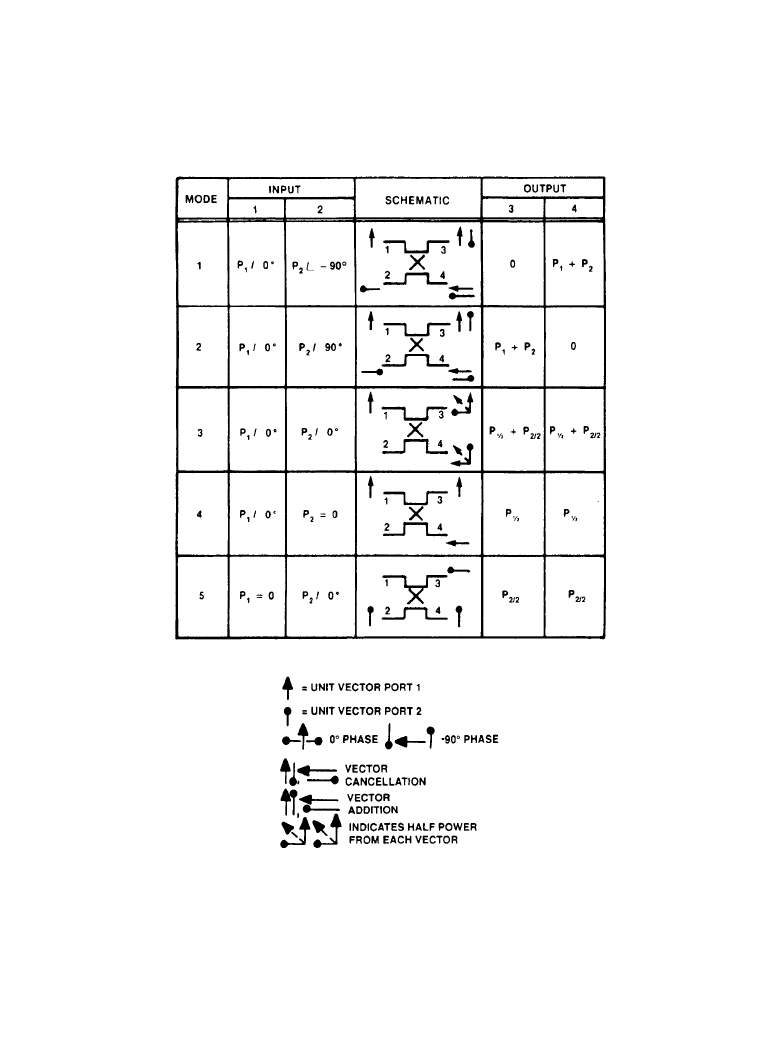
RF Combiner and Diplexer Systems 11-133
As noted previously, if the two inputs from the separate amplifiers are not equal in amplitude
and not exactly in phase quadrature, some power will be dissipated in the difference port reject
load. Figure 11.6.7 plots the effect of power imbalance, and Figure 11.6.8 plots the effects of
Table 11.6.2 Single 90° Hybrid System Operating Modes
Downloaded from Digital Engineering Library @ McGraw-Hill (www.digitalengineeringlibrary.com)
Copyright © 2004 The McGraw-Hill Companies. All rights reserved.
Any use is subject to the Terms of Use as given at the website.
RF Combiner and Diplexer Systems
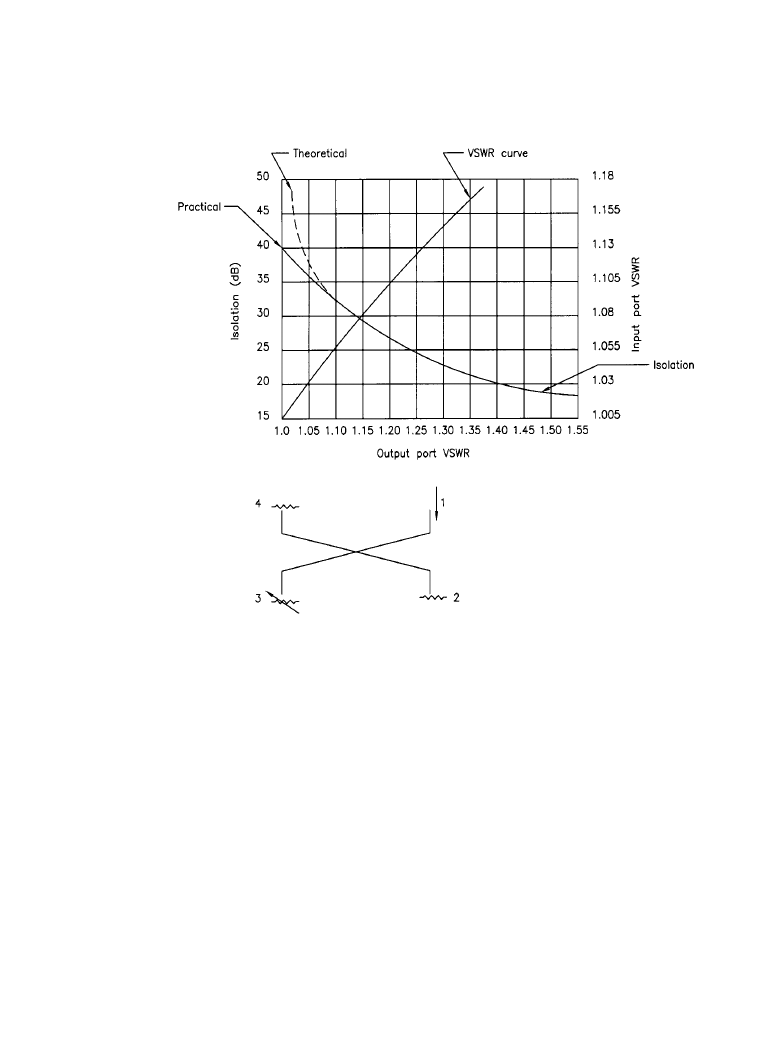
11-134 Broadcast Transmission Systems
phase imbalance. The power lost in the reject load can be reduced to a negligible value by trim-
ming the amplitude and/or phase of one (or both) amplifiers.
11.6.3a
Microwave Combiners
Hybrid combiners typically are used in microwave amplifiers to add the output energy of individ-
ual power modules to provide the necessary output from an RF generator. Quadrature hybrids
effect a VSWR-canceling phenomenon that results in well-matched power amplifier inputs and
outputs that can be broadbanded with proper selection of hybrid tees. Several hybrid configura-
tions are possible, including the following:
•
Split-tee
(
a)
(
b)
Figure 11.6.6
The effects of load VSWR on input VSWR and isolation: (
a) respective curves, (b)
coupler schematic.
Downloaded from Digital Engineering Library @ McGraw-Hill (www.digitalengineeringlibrary.com)
Copyright © 2004 The McGraw-Hill Companies. All rights reserved.
Any use is subject to the Terms of Use as given at the website.
RF Combiner and Diplexer Systems
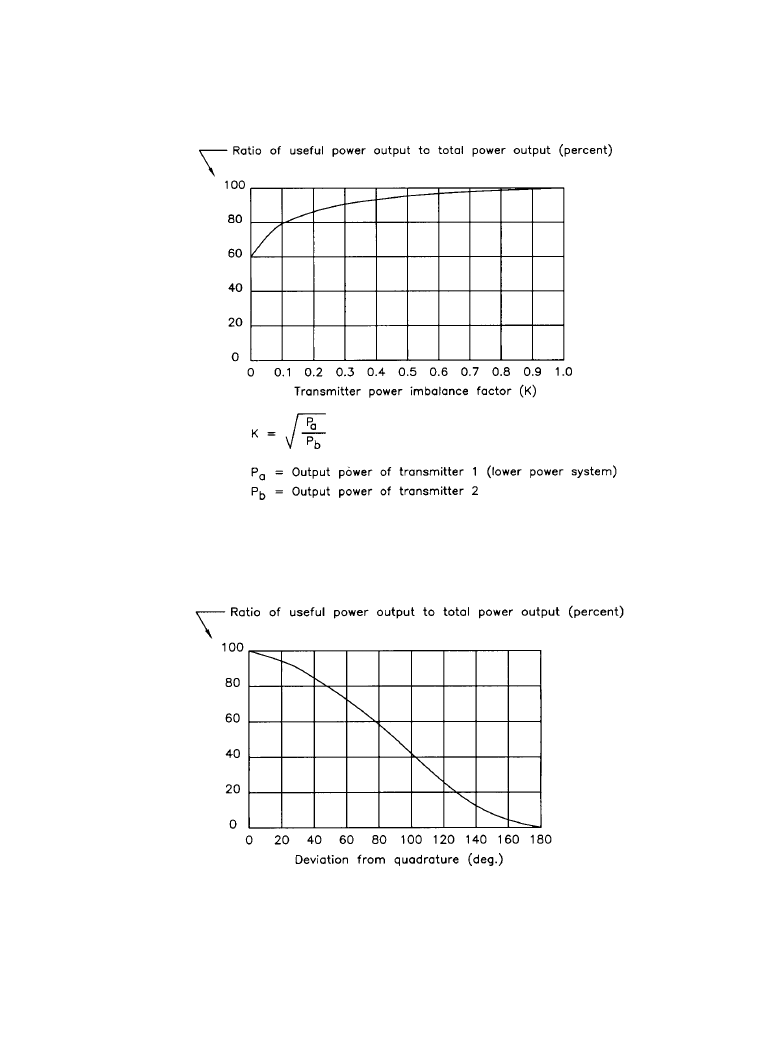
RF Combiner and Diplexer Systems 11-135
Figure 11.6.7
The effects of power imbalance at the inputs of a hybrid coupler.
Figure 11.6.8
Phase sensitivity of a hybrid coupler.
Downloaded from Digital Engineering Library @ McGraw-Hill (www.digitalengineeringlibrary.com)
Copyright © 2004 The McGraw-Hill Companies. All rights reserved.
Any use is subject to the Terms of Use as given at the website.
RF Combiner and Diplexer Systems
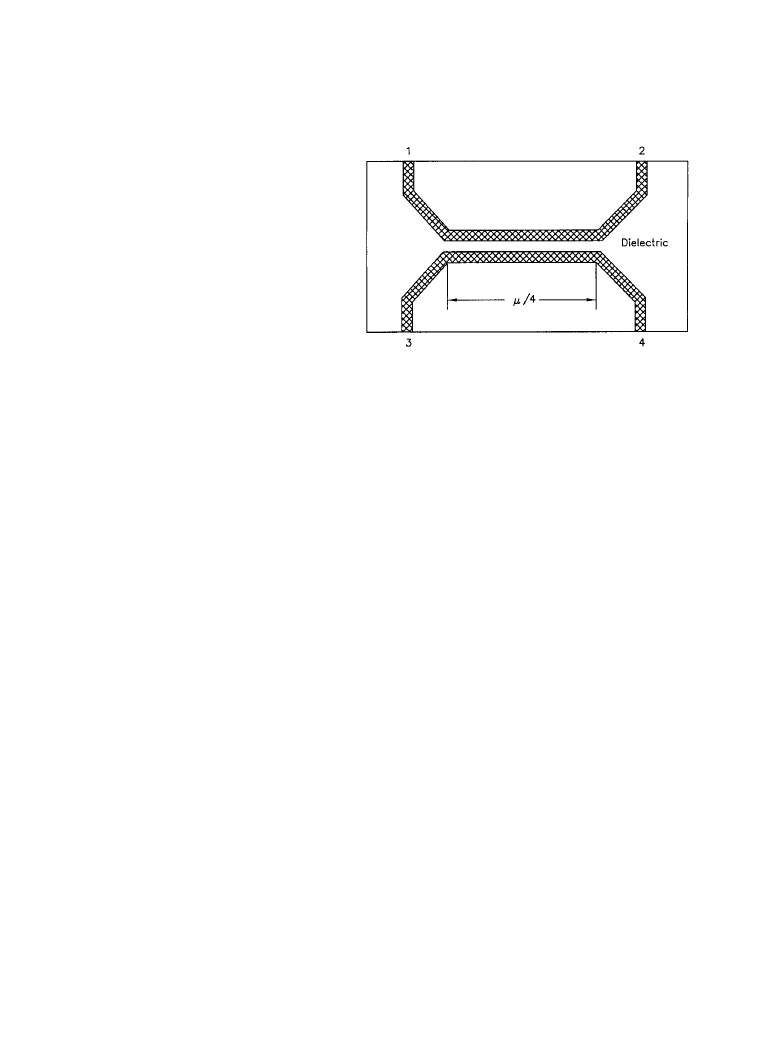
11-136 Broadcast Transmission Systems
•
Branch-line
•
Magic-tee
•
Backward-wave
Key design parameters include coupling bandwidth, isolation, and ease of fabrication. The
equal-amplitude quadrature-phase reverse-coupled TEM 1/4-wave hybrid is particularly attrac-
tive because of its bandwidth and amenability to various physical implementations. Such a
device is illustrated in Figure 11.6.9.
11.6.3b
Hot Switching Combiners
Switching RF is nothing new. Typically, the process involves coaxial switches, coupled with the
necessary logic to ensure that the “switch” takes place with no RF energy on the contacts. This
process usually takes the system off-line for a few seconds while the switch is completed.
Through the use of hybrid combiners, however, it is possible to redirect RF signals without turn-
ing the carrier off. This process is referred to as hot switching. Figure 11.6.10 illustrates two of
the most common switching functions (SPST and DPDT) available from hot switchers.
The unique phase-related properties of an RF hybrid make it possible to use the device as a
switch. The input signals to the hybrid in Figure 11.6.11a are equally powered but differ in phase
by 90°. This phase difference results in the combined signals being routed to the output terminal
at port 4. If the relative phase between the two input signals is changed by 180°, the summed out-
put then appears on port 3, as shown in Figure 11.6.11b. The 3 dB hybrid combiner, thus, func-
tions as a switch.
This configuration permits the switching of two RF generators to either of two loads.
Remember, however, that the switch takes place when the phase difference between the two
inputs is 90°. To perform the switch in a useful way requires adding a high-power phase shifter to
one input leg of the hybrid. The addition of the phase shifter permits the full power to be com-
bined and switched to either output. This configuration of hybrid and phase shifter, however, will
not permit switching a main or standby transmitter to a main or auxiliary load (DPDT function).
To accomplish this additional switch, a second hybrid and phase shifter must be added, as shown
in Figure 11.6.12. This configuration then can perform the following switching functions:
Figure 11.6.9
Reverse-coupled
1/4-wave hybrid combiner.
Downloaded from Digital Engineering Library @ McGraw-Hill (www.digitalengineeringlibrary.com)
Copyright © 2004 The McGraw-Hill Companies. All rights reserved.
Any use is subject to the Terms of Use as given at the website.
RF Combiner and Diplexer Systems